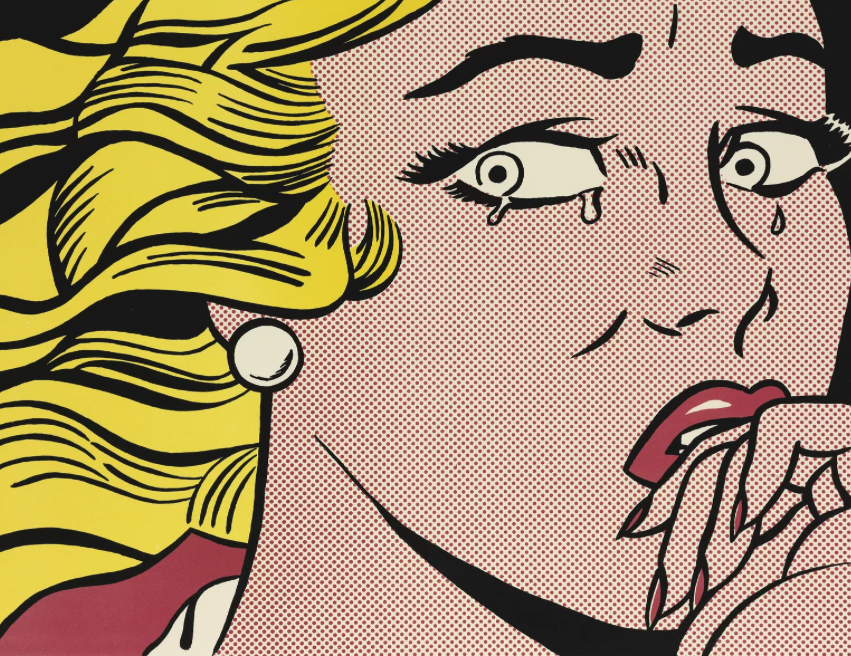TIn the bold, comic-strip-inspired world of 20th-century art, few names are as instantly recognizable as Roy Lichtenstein. A key figure in the Pop Art movement, Lichtenstein transformed the language of popular culture into a form of high art, challenging traditional boundaries and sparking global debate about what constitutes artistic value.
Born in New York City in 1923, Roy Fox Lichtenstein grew up in an upper-middle-class family with early exposure to art and design. Though his initial academic path included studies in science and literature, he quickly shifted toward art, studying under prominent instructors and immersing himself in the techniques of American modernism. Yet it wasn’t until the 1960s that he would find his voice—and in doing so, redefine contemporary art.
Early Life and Education
Raised in Manhattan’s Upper West Side, Lichtenstein showed artistic promise from an early age. He attended the Art Students League of New York as a teenager before enrolling at Ohio State University, where he studied fine arts under Hoyt Sherman, a professor who greatly influenced his visual thinking and analytical skills.
World War II interrupted his studies, and Lichtenstein served in the U.S. Army, working in engineering and even drawing maps for military operations. After the war, he returned to Ohio State and earned both his bachelor’s and master’s degrees, later joining the faculty.
His early work was relatively conventional, including Cubist- and Expressionist-inspired painting, with subjects drawn from American folklore, landscapes, and portraiture. But as the post-war cultural climate shifted and mass media began shaping visual language, Lichtenstein’s art began to evolve.
The Birth of Pop Art
By the late 1950s and early 1960s, Lichtenstein became increasingly intrigued by the imagery of commercial culture—comic books, advertising, and consumer packaging. In 1961, his now-iconic painting “Look Mickey” marked a pivotal shift. The painting, which features Disney’s Mickey Mouse and Donald Duck in a bold comic book style, launched Lichtenstein’s exploration of Ben-Day dots, speech balloons, and graphic outlines—all inspired by the printing processes of mass media.
“Look Mickey” wasn’t merely parody or pastiche. It was a bold statement that mass-produced imagery deserved a place on gallery walls. This painting, along with others like “Whaam!” (1963) and “Drowning Girl” (1963), cemented his position as a central figure in Pop Art, alongside contemporaries such as Andy Warhol, James Rosenquist, and Claes Oldenburg.
Style and Technique
Lichtenstein’s signature style—flat, graphic compositions with dotted shading and thick outlines—was painstakingly executed to appear machine-made. He mimicked the Ben-Day dot technique, commonly used in comic books and newspapers, but reproduced it with brushes, stencils, and an extraordinary attention to detail. His technique often tricked viewers into assuming the works were printed, not painted.
Through this style, Lichtenstein explored themes of romance, war, consumerism, and visual perception. While the surface of his paintings was sleek and polished, the underlying messages were complex, sometimes ironic, and deeply reflective of American culture during a time of rapid change.
His artwork questioned the hierarchy of “high” versus “low” art. Was a panel from a comic book less valuable than an oil painting? Could beauty exist in mass production? Lichtenstein’s work asked audiences to reexamine their assumptions.
Criticism and Debate
From the beginning, Lichtenstein’s appropriation of comic book art sparked controversy. Critics accused him of copying the work of comic artists without proper credit or compensation. Indeed, many of his early works closely mirrored panels drawn by artists like Tony Abruzzo and Russ Heath.
While Lichtenstein always asserted that his work involved reinterpretation, transformation, and critique, the debate about originality versus appropriation has followed his legacy. In recent years, scholars and contemporary artists have revisited this discussion, raising questions about ethics, influence, and intellectual property in art.
Despite these tensions, Lichtenstein’s impact on art history remains uncontested. His work influenced generations of artists and changed the way visual culture is perceived in both museums and mainstream media.
Beyond the Comic Panel
Although Lichtenstein is best known for his comic book and advertising-inspired works, his career was far more diverse than many realize. Over the years, he explored a wide range of artistic styles and historical references.
In the late 1960s and 1970s, he produced a series of paintings that parodied Abstract Expressionism, often referred to as “Brushstrokes.” These works humorously mimicked the raw, emotional energy of painters like Jackson Pollock, replacing spontaneous gestures with meticulously rendered simulations.
Lichtenstein also ventured into art deco, surrealism, cubism, and still life. His later works include sculptures, interior design motifs, and public art installations, revealing his versatility and continued interest in how style influences meaning.
Legacy and Influence
Roy Lichtenstein passed away in 1997 from complications related to pneumonia, but his influence endures in both the art world and popular culture. His works are held in major institutions worldwide, including the Museum of Modern Art, the Whitney Museum, the Tate Modern, and the Art Institute of Chicago.
In 2012, the Art Institute of Chicago and the National Gallery of Art in Washington, D.C., launched a major retrospective titled “Roy Lichtenstein: A Retrospective,” showcasing over 130 works spanning his entire career. The exhibit underscored his range and invited new generations to engage with his art beyond the familiar comic aesthetic.
Today, Lichtenstein’s work continues to be referenced across disciplines—from fashion and advertising to film and digital media. Artists exploring digital reproduction, identity, and visual saturation often cite him as an influence, and his interrogation of visual language feels more relevant than ever in the Instagram age.
Final Thoughts
Roy Lichtenstein’s work remains a powerful reminder that art can exist anywhere—in the pages of a comic book, the bold face of an ad, or the whispered irony of a speech balloon. His legacy is not just in the images he created but in the questions he asked about authorship, originality, and the role of popular imagery in shaping our collective experience.
No comments yet.








